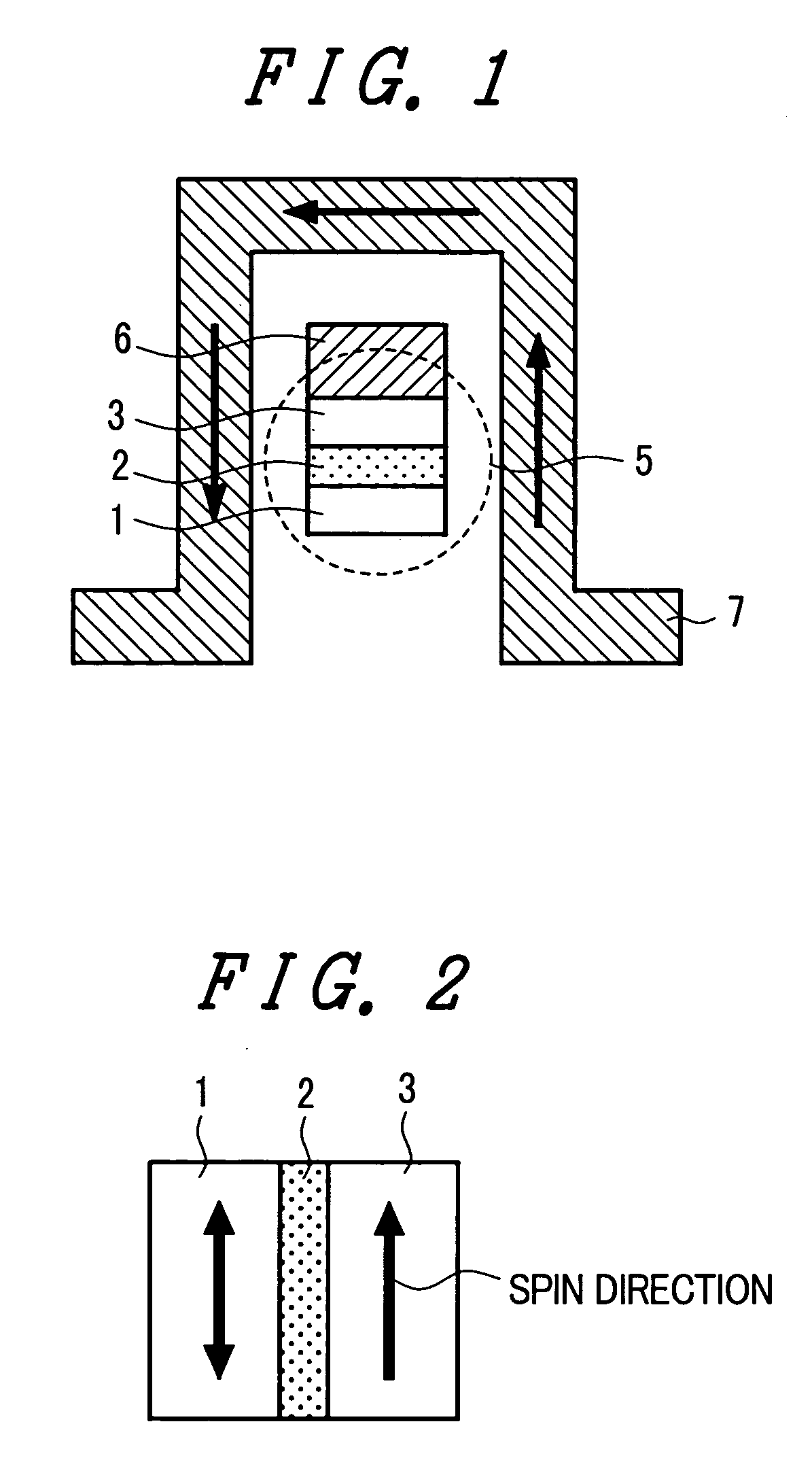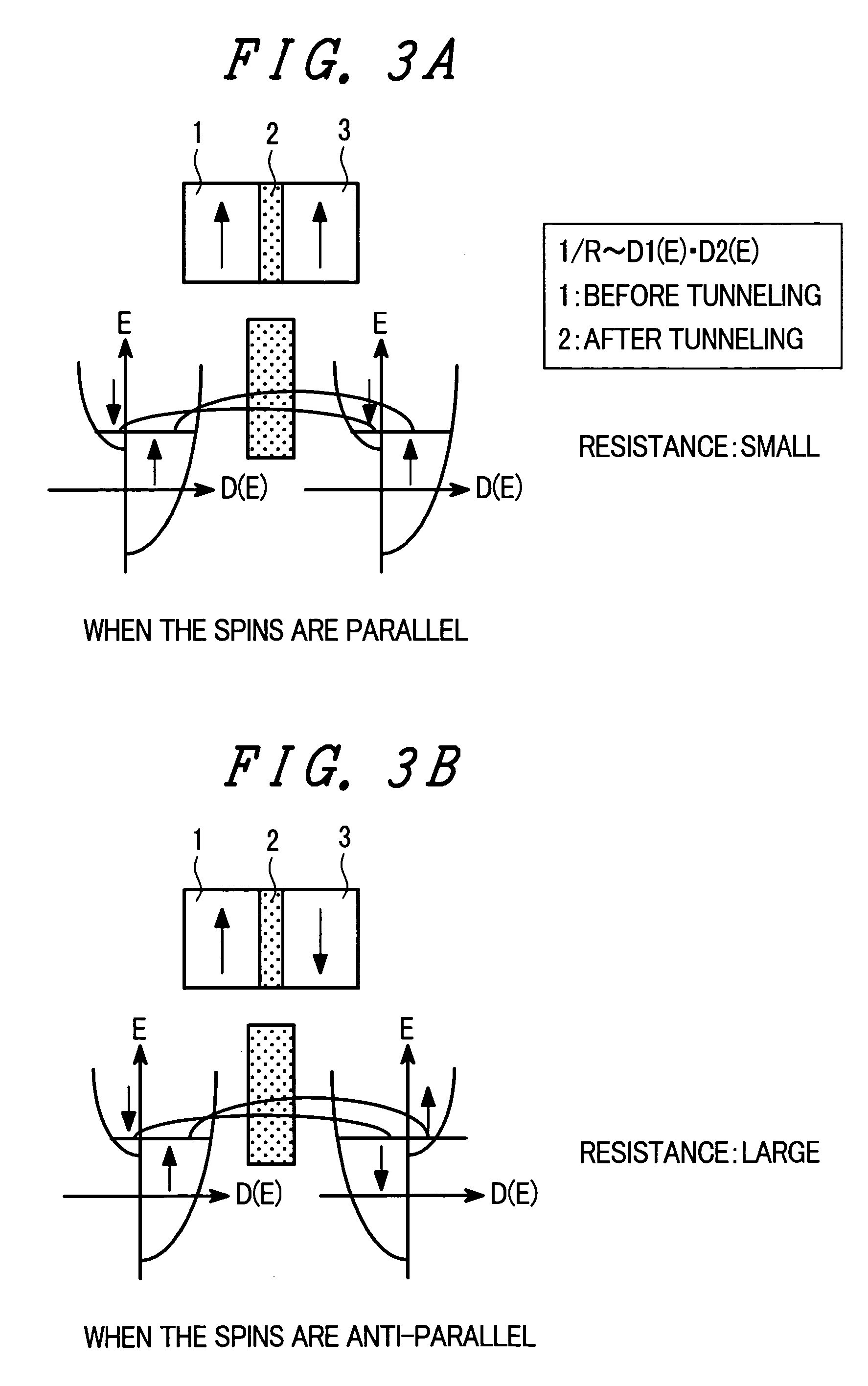Magnetic semiconductor memory device
a semiconductor and memory device technology, applied in semiconductor devices, digital storage, instruments, etc., can solve problems such as large power consumption
- Summary
- Abstract
- Description
- Claims
- Application Information
AI Technical Summary
Problems solved by technology
Method used
Image
Examples
second embodiment
[0056] The present embodiment is directed to a method for achieving power reduction more than in the first embodiment. In order to accomplish the object, a bit line is covered with a soft magnetic material such as NiFe. As a result, it is possible to prevent any leakage of a magnetic field from a portion covered with the magnetic material, so as to generate a stronger magnetic field, thereby achieving power reduction. A fabricating method will be described below in reference to the attached drawings.
[0057] The fore half of the fabricating processes are the same as those in the first embodiment. Specifically, the processes illustrated in FIGS. 9 to 14 are the same as those in the first embodiment. Subsequently, tungsten serving as a bit line is deposited in a thickness of 100 nm. Next, for the purpose of magnetic shield, a soft magnetic material 21 such as NiFe is deposited in a thickness of 10 nm. Furthermore, a silicon oxide film is deposited in a thickness of 100 nm. The resultant...
third embodiment
[0062] In the first and second embodiments, the normal planar transistor is used as the select transistor in the MRAM. In the present embodiment, a vertical transistor is used as the select transistor, thereby reducing a cell area. Unlike the DRAM, a leak current in a cell transistor cannot critically influence on a memory function in the MRAM. This is because information is held in the spin direction. Thus, in the present embodiment, processes are simplified by forming the vertical transistor with polycrystalline silicon. Hereinafter, explanation will be made in reference to the attached drawings.
[0063] A transistor in a peripheral circuit is formed in normal fabricating processes. After the deposition of an interlayer dielectric 17, a contact plug is fabricated, and further, a first local wiring made of tungsten is formed. In a memory array, the resultant wiring layer is used as a common ground line 13. The state at this time is shown in FIG. 26. Subsequently, an interlayer dielec...
PUM
 Login to View More
Login to View More Abstract
Description
Claims
Application Information
 Login to View More
Login to View More - R&D
- Intellectual Property
- Life Sciences
- Materials
- Tech Scout
- Unparalleled Data Quality
- Higher Quality Content
- 60% Fewer Hallucinations
Browse by: Latest US Patents, China's latest patents, Technical Efficacy Thesaurus, Application Domain, Technology Topic, Popular Technical Reports.
© 2025 PatSnap. All rights reserved.Legal|Privacy policy|Modern Slavery Act Transparency Statement|Sitemap|About US| Contact US: help@patsnap.com



